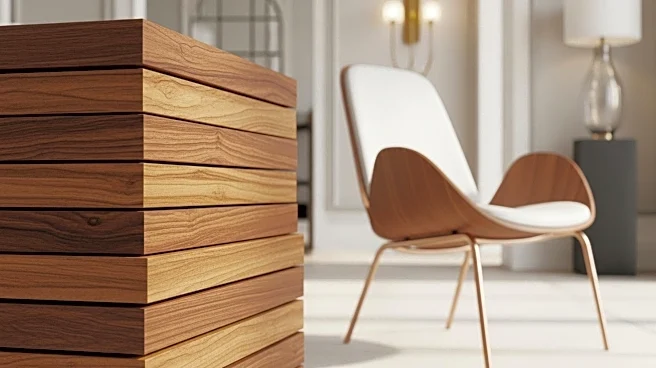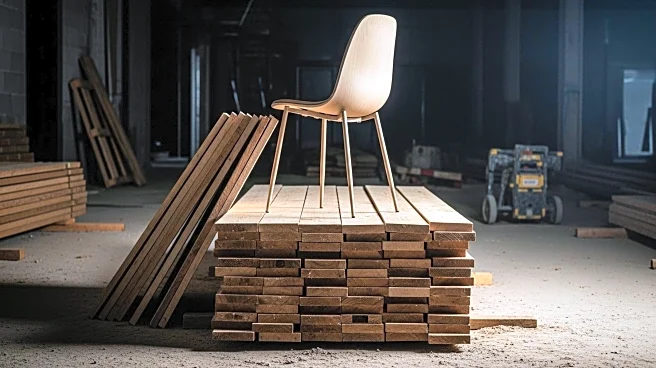What's Happening?
President Donald Trump has ordered new tariffs on wood and wood products, including imported lumber, timber, kitchen cabinets, and upholstered furniture. The tariffs, set to take effect on October 14, will impose a 10% levy on softwood lumber and timber, and a 25% tariff on kitchen cabinets and upholstered furniture. These rates will increase further in January 2026. The U.S. sources about 30% of its softwood lumber from Canada, which is already subject to anti-dumping duties.
Why It's Important?
The new tariffs are expected to raise the cost of residential construction, impacting builders, developers, and consumers. As construction costs rise, housing affordability may be affected, potentially slowing down the residential real estate market. The increased costs could also be passed on to homebuyers, making it more challenging for individuals to purchase homes. The reliance on imported materials underscores the need for domestic production to stabilize prices.
What's Next?
The construction industry may need to explore alternative materials or sourcing strategies to mitigate the impact of tariffs. Builders and developers might also seek to negotiate with suppliers to manage costs. The ongoing trade tensions could lead to further policy changes, requiring industry stakeholders to stay informed and adaptable. Collaboration with policymakers may be necessary to address the challenges posed by tariffs and support the housing market's stability.











